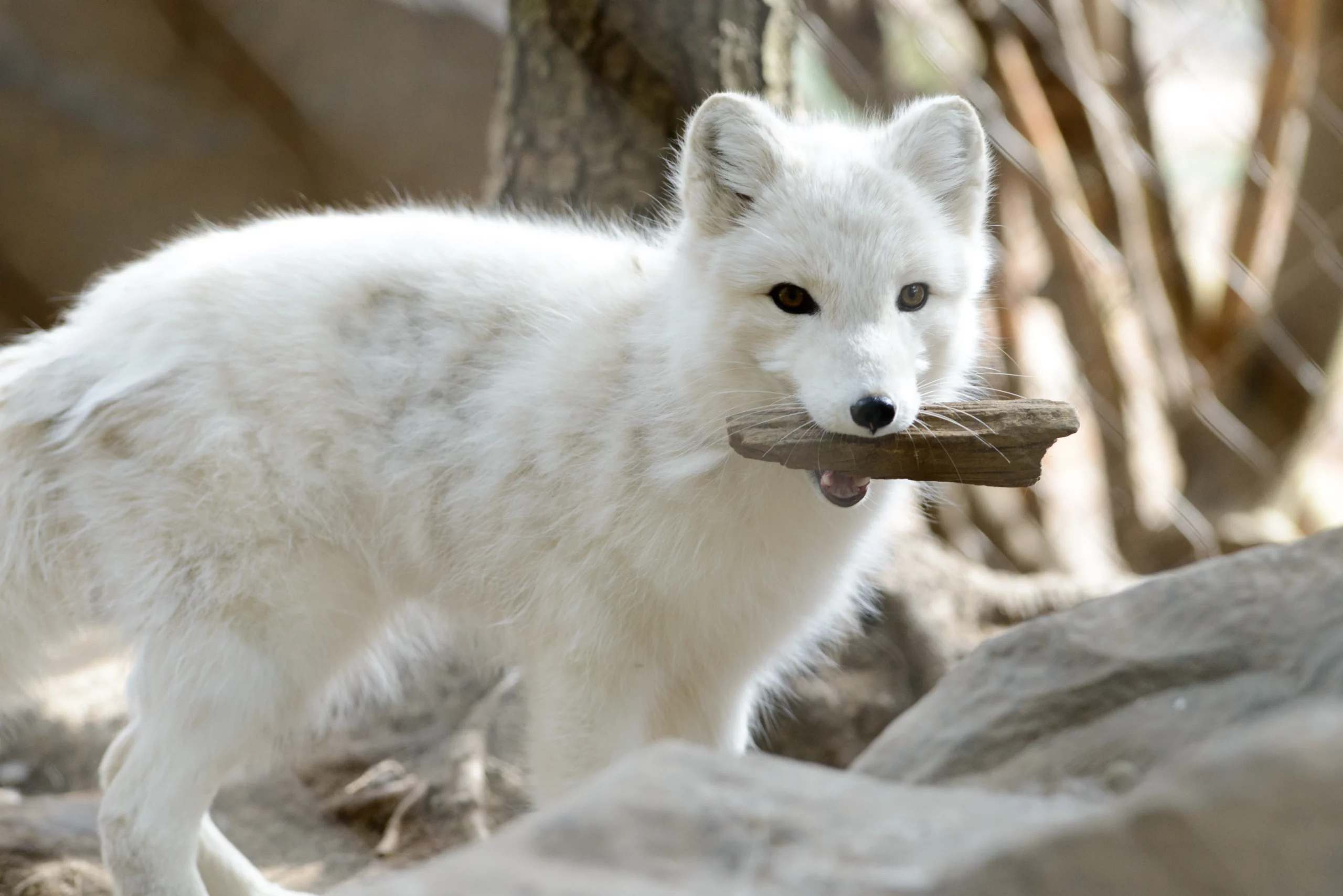Arctic foxes are interesting animals. They are not only cute and fluffy, but are arguably good for the environment. This post will describe how foxes can increase the biodiversity by stashing food. Additionally, I will show how this instinct can develop into abnormal behaviour in captivity.
As the arctic winter is a harsh one, they bury their food. Besides stashing for harsher times, foxes have a relatively small stomachs. While “common” red foxes also show a similar behaviour, it is especially important for the arctic ones. One of the oldest report of such behaviour is the journal of the seafarer George Francis Lyon:
Their first impulse on receiving food is to hide it as soon as possible, even though suffering from hunger, and having no fellow-prisoners of whose honesty they are doubtful. In this case snow is of great assistance, as being easily piled over their stores, and then forcibly pressed down by the nose.
G.F. Lyon (1824)1 p. 105
This behaviour is likely to be explained as the availability of food changes during the year. Nevertheless, some caches are not recovered—sometimes other animals steal the food, but sometimes may just be forgotten. The latter do have a positive impact to the biodiversity of its surroundings:
The flora in the neighbourhood of this den was wonderfully rich, the soil having been fertilized by the presence of the Foxes. Several [flowers and grasses] brightened the spot. As we rested there, many little Lemmings popped up from their holes, and undismayed by our presence commenced feeding on the plants. We noticed that many dead Lemmings were scattered around. In every case they had been killed in the same manner, the sharp canine teeth of the Foxes had penetrated the brain. […] Then to our surprise we discovered numerous deposits of dead Lemmings. In one out-of-the-way corner under a rock we pulled out a heap of over fifty dead Lemmings [and other animals]. We disturbed numerous “caches” of twenty and thirty, and the ground was honey-combed with holes that each contained several bodies of these little animals, a small quantity of earth being placed over them. […] It is also a very beautiful arrangement that the increased flora induced by the presence of the Foxes should be the means of attracting and sustaining the Lemmings in the immediate vicinity of the Foxes’ den.
Feilden et. al (1877) p. 319
Lyon captured some arctic foxes on his journey. We know now to better not keep foxes in captivity, especially on ships. They are feral animals! As caching food is considered a stereotypical behaviour2, arctic foxes still try to exercise it in captivity. While cute, such behaviour is seen abnormal:
I frequently observed my dog-fox, when no snow was obtainable, gather his chain into his mouth, and in that manner carefully coil it so as to hide the meat. On moving away, satisfied with his operations, he of course, has drawn it after him again, and sometimes with great patience repeated his labours five or six times, until, in a passion, he has been constrained to eat his food without its having been rendered luxuriant by previous concealment.
G. F. Lyon (1824)3
Today, the actions of the captured foxes may be considered a vacuum activity: A behaviour appropriate for the wilderness the animal repeats as the action cannot succeed in the new environment. This may be the earliest observation of such behaviour.
I found both historic anecdotes in the book Dogs, jackals, wolves, and foxes: a monograph of the Canidæ4. As obvious from the name, it is a book about canids. As it is from 1890, it is quite outdated – today, foxes are considered “vulpes” and not “canis”. See also the remark in the next section.
References
Please be aware these are historic sources. They may contain discrimination, racism and (animal) cruelty. Quoting from them is not endorsement of the opinions.
- Lyon, G. F. (1824). The private journal of Captain G.F. Lyon of H.M.S. Hecla during the recent voyage of discovery under Captain Parry [Microform]. John Murray. https://archive.org/details/privatejournalc01lyongoog/page/105 ↩︎
- Wall, S. B. V. (1990). Food hoarding in animals (1st ed.). The University of Chicago Press. https://archive.org/details/foodhoardinginan0000vand/page/227/ (access requires registration) ↩︎
- Feilden, H. W., S., F. G., & S., C. M. Z. (1877). On the mammalia of north greenland and grinnel land. The Zooloogist. Third Series., 1(8), 313-321. https://archive.org/details/storm-petrelzoologist77lond/page/318 ↩︎
- Jackson, G. (1890). Dogs, jackals, wolves, and foxes: a monograph of the Canidæ. R.H. Porter & Dulau. https://archive.org/details/dogsjackalswolve00mivarich/ ↩︎
Featured image: Arctic Fox with Stick by Eric Kilby on Flickr licensed under CC BY-SA 2.0.

Leave a Reply